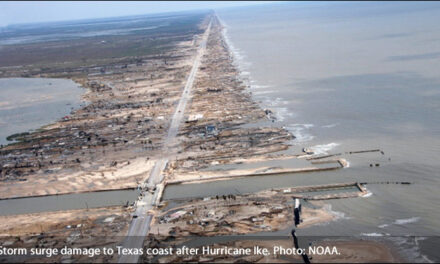Transcript
Intro
0:00
[Music]
Changing ecosystem
0:06
The Arctic is an ecosystem in transition,
0:09
and adaptation to a warmer Arctic
0:12
is essential to the survival and resilience
0:14
of its plants and wildlife,
0:16
and the well-being of the communities that depend on them.
Arctic tundra
0:20
Transformation is especially clear on the Arctic tundra.
0:24
The tundra has absorbed
0:25
and stored carbon in frozen soil for millennia,
Wildfires and carbon dioxide
0:29
but wildfires across warming permafrost regions
0:32
are increasing and tipping the scales,
0:35
resulting in the release of carbon back into the atmosphere,
0:39
accelerating human-caused climate change.
Sea ice
0:43
Another of the region’s most defining characteristics,
0:46
sea ice, has served as a bellwether of the Arctic’s shift
0:50
to a new environmental state,
0:52
particularly over the last two decades.
Surface air temperature
0:56
And, Arctic surface air temperatures continue to rise,
1:00
with 2024 being the second warmest year on record.
1:04
In August, record-breaking heat waves
1:06
baked Northern Alaskan and Canadian communities.
1:10
But these changes aren’t uniform.
1:12
In the Eurasian Arctic,
Non-uniform changes
1:14
sea surface temperatures were unusually high,
1:17
while temperatures in the Pacific Arctic were much lower.
1:21
In parts of the Canadian Arctic and Siberia,
1:24
an extremely dry summer stood in stark contrast
1:28
to heavy precipitation over much of Alaska and Scandinavia.
1:32
And across the Arctic,
1:34
winter snow accumulation was above average,
1:37
but the length of the snow season
1:39
contrasted sharply by region.
1:42
For parts of the Canadian Arctic, a late onset of snow
1:45
and early spring melt resulted in the shortest snow season
1:49
in 26 years.
Seals
1:52
Despite challenges, the threatened ringed
1:55
seal populations in the Pacific Arctic region
1:58
are persevering, even though their primary food source,
2:01
Arctic cod, is becoming less available as ocean waters warm.
2:06
But as the sea ice, where females nurse their pups,
2:10
becomes less stable in spring and recedes earlier,
2:13
the seal’s future remains uncertain.
Migratory caribou
2:17
Unlike ice seals,
2:19
many North American migratory caribou
2:21
are facing severe population declines,
2:24
plummeting by 65% overall in recent decades.
2:29
Though small coastal caribou populations
2:31
have recently grown or remain stable,
2:34
rapid declines in large inland populations
2:37
are a serious concern for local communities.
2:40
The increase in freezing rain
2:42
and rain-on-snow events makes it difficult
2:45
for foraging caribou to access food,
2:47
and warmer temperatures allow taller shrubs
2:50
to crowd the lichen the caribou depend on.
Indigenous resilience and adaptability
2:54
As the Arctic warms,
2:55
Indigenous Peoples work to preserve
2:58
and evolve their cultural practices,
3:00
demonstrating resilience and adaptability
3:03
in the face of extreme environmental transformations.
Worldwide impacts
3:07
But Arctic changes have worldwide impacts,
3:10
and global attention is critical
3:12
to reduce risks into the future
3:14
and support successful adaptation
3:17
in the Arctic and beyond.
3:19
[Music]


